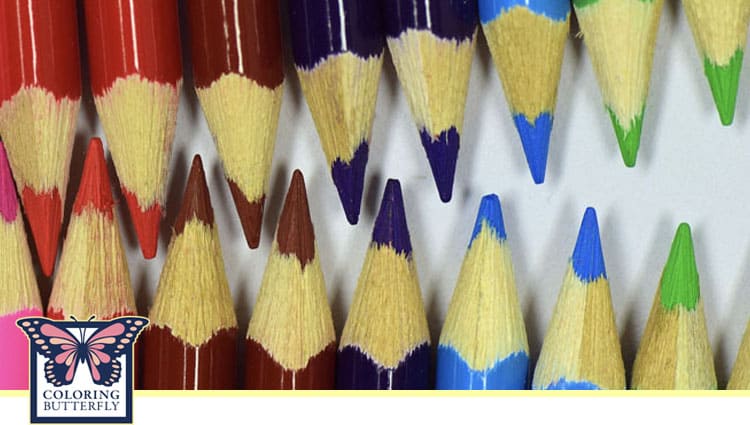
A story about how adult coloring aids my Traumatic Brain Injury, TBI recovery.
Before experiencing the car crash that gave me a Traumatic Brain Injury (TBI), I was happy to spend 8-plus hours in my chosen storytelling profession for international organizations. I enjoyed every minute of the experience. The writing assignments were intriguing and challenging, the deadlines with tight and stressful, and my colleagues were extraordinary. It was my dream job. At home, I look forward to CrossFit, helping with home chores while trying to find time to relax with my wife and be alone.
Adult Coloring and TBI Recovery
Table of Contents
Other resources. Check out other supporting resources on ColoringButterfly.com that you might enjoy.
- How A Car Crash Gave Me the Gift of “Living in the Present”
- Buying A Coloring Book: Everything You Need to Know (Guide)
- Buying Colored Pencils? Everything You Need Know (Guide)
The car crash changed my life. I went from being fully engaged in a fast passed world to being thankful for each new day and being alive. The simple acts of walking, thinking, seeing, and sleeping was a chore. The road to TBI recovery is slow, and I still don’t know what recovery will mean. But I will be happy with the journey and all the unexpected beautiful changes it has brought to my life. I tell more of the story in the article “How A Car Crash Gave Me the Gift of “Living in the Present”.” In this article, I would like to share more about the holistic value of coloring in our everyday lives.
As part of my TBI recovery, I was introduced to adult coloring to help improve my cognitive and motor skills. I was skeptical about the benefits of coloring. Frankly, I felt I was too old and above spending time with colored pencils and coloring books when I wanted to recover.
When I challenged my physical and cognitive therapy team about coloring, they assured me that the science, studies and results affirmed the value of coloring for assisting in my TBI recovery. As a personal challenge, I needed to understand the science behind coloring and just how this activity was supposed to make a difference. If coloring had minimal chance of helping, I would embrace the activity and happily engage in the coloring as part of my therapy.
My research convinced me that coloring was of value for my TBI. I went from coloring for therapy to loving, exploring, growing and having an incredible adventure. [TOC]
Adult Coloring and TBI Recovery
The following is what I learned. The following is what I experienced from adult coloring aiding my TBI recovery.
Relaxes the Brain and Induces A Meditative State
Adult coloring is a beautiful way to relax and quiet the mind. Adult coloring can be therapeutic for some people in their TBI recovery. Studies show that simple acts, such as coloring, take your attention away from yourself (and those things stressing you out) and onto the present-moment event. The meditative state results when you focus on the moment/present without thoughts of the past or future. The act of coloring is a singular action, spending internal clutter of dialogue and helping to remove negative thoughts and emotions. [TOC]
from yourself (and those things stressing you out) and onto the present-moment event. The meditative state results when you focus on the moment/present without thoughts of the past or future. The act of coloring is a singular action, spending internal clutter of dialogue and helping to remove negative thoughts and emotions. [TOC]
Improves Motor Skills and Vision
When you color more complex/intricate designs, you improve your hand-eye coordination and motor skills as you color various size spaces in TBI recovery. Coloring requires the two hemispheres of the brain to communicate.
In a world filled with electronics, people aren’t using those fine motor skills as much. The act of coloring helps to train your brain to develop more efficient fine motor skills when choosing colors to use, staying inside the lines, and coloring shapes and patterns.
In addition, some healthcare professionals believe that engaging in activities like coloring, crossword puzzles, and brainteasers can help to delay the onset of dementia. [TOC]
Improves Sleep
The act of coloring in a coloring book before bed allows your melatonin level to release naturally, and the brain and body prepare for rest/sleep in TBI recovery. If you put aside the electronic device and color before bed, you will likely have a better sleep experience.
Why? The interaction with a phone or tablet exposes your brain to blue light that can hinder sleep quality by stopping the natural release of melatonin. Coloring is a relaxing and electronic-free bedtime ritual that won’t disturb your level of melatonin. [TOC]
Improves Focus and Concentration
In addition to reducing stress, adult coloring improves focus in TBI recovery. You activate the brain’s frontal lobe responsible for organizing and problem-solving as you color. Regular coloring allows you to relax from the day’s activity as you focus on the coloring experience.
Take, for example, the workplace, where many tasks can leave a person overwhelmed/stressed. When the brain has a variety of assignments to complete, the individuals can experience difficulty with focus, in-efficient use of time and productivity. Evidence shows that a short coloring break allows the brain to regain focus and increases creativity, resulting in the ability to successfully and innovatively manage tasks. [TOC]
Reduces Stress and Anxiety
Coloring can relax the brain’s fear center, the amygdala, which induces a state of meditation by reducing the thoughts of a restless mind. According to studies, coloring for as little as 20 or more minutes can reduce the heart rate and feelings of anxiety.
minutes can reduce the heart rate and feelings of anxiety.
Interestingly, coloring intricated designs like mandalas were more effective than coloring a plaid pattern/blank pages to reduce stress and anxiety. In addition, coloring directly influenced the contributing factors associated with anxiety, such as mood improvement, enhanced mindfulness and reduced mental health stress.
Stress affects the body’s health in areas such as body aches, sleeping problems, fatigue, and depression. The act of coloring helps the mind relax and perform/function better, which helps to relieve stress and tension from your body, which helps to decrease the stress affected by anxiety. Coloring does not cure your anxiety or depression but it can help reduce anxiety and stress that can lead to depression. [TOC]
Coloring Encourages Socialization
While coloring is considered a solitary activity, many adults are turning coloring into a social affair, engaging in coloring sessions at home and other communal gathering places (e.g., libraries, clubs, office breaks and more). Coloring together as a family is a great way to relax, talk, and bond.
Socialization benefits the body and mind, boosts self-esteem, combats depression, and even strengthens the immune system in TBI recovery. Combining the therapeutic benefits of coloring and socialization can further reduce stress, increase feelings of happiness, and boost your overall health. [TOC]
Coloring is Fun
As adults are introduced to coloring, they often underestimate the benefits of spending time coloring, which is a fun and rewarding experience.
Before experiencing a dramatic car crash, spending 8-plus hours daily in my chosen storytelling profession for international organizations was easy. The role is filled with tight and stressful deadlines, endless meetings, and little time to enjoy the experience. At home, I look forward to helping with home chores while trying to find time to relax with my wife and be alone.
It’s essential to be able to put something aside and take just a few minutes to fit a fun activity into each day. Just 15 minutes spent coloring will help relax your mind, reboot your brain, and improve your mood. Coloring before bed is a beautiful way to prepare your body for sleep and a great alternative to the distressing blue light of electronics that can contribute to insomnia. [TOC]
Conclusion
Adult coloring has proven to provide and promote mind and body benefits in TBI recovery. It is an enjoyable activity that can help reduce chronic stress, boost concentration, enhance creativity, and improve fine motor skills. Many adults find adult coloring books’ beautiful themes and intricate designs motivational, calming and breathtaking. It is a wonderful escape into a magical world of gardens, forests, and mythical worlds. You feel a sense of accomplishment in learning new skills and bringing pages to life with color to create unique works of art. It’s hard to make mistakes; if you do, there are no real consequences. [TOC]
If you liked this article, you may like articles on ColoringButterfly.com
Article Sources
Art Therapy: Journal of the American Art Therapy Association: “Can Coloring Mandalas Reduce Anxiety.” PDF Version
Beaumont Health: “Health Benefits of Coloring for Adults.”
Cleveland Clinic: “3 Reasons Adult Coloring Can Actually Relax Your Brain.”
Mayo Clinic Health System: “Coloring is good for your health.”
Piedmont Healthcare: “Do coloring books for adults decrease stress?”
Psychology Today: “Are Adult Coloring Books Actually Helpful?”






